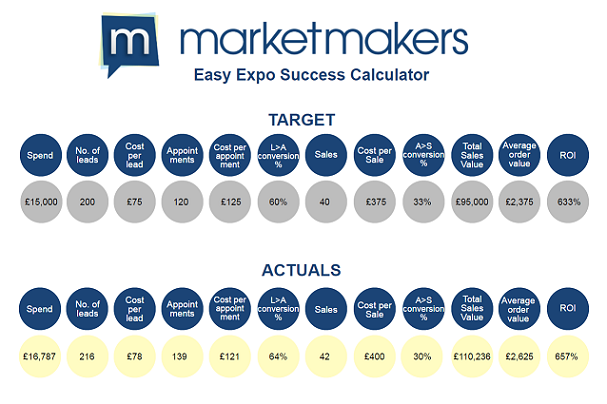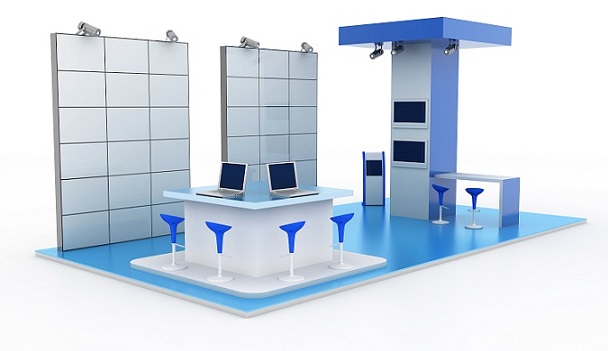Exhibitions: The importance of measuring success
Exhibitions are an important, albeit expensive part of a company’s marketing budget. But in early stage prospecting when the competition is so high, exhibitions can give us an edge nothing else can: the freedom of meeting prospects face to face and presenting a solution to their problem.
Although exhibitions can be the start of the optimum relationships and business opportunities, most marketers are still missing out on the best that exhibitions can offer, and despite the expense and effort that marketers go to put on exhibitions, many people still fail to measure exactly how successful the event was for them, and ultimately what can be improved in the future.
What to do BEFORE the exhibition
Working out your budget for an exhibition can be the most daunting thing. How much you spend on the space, the designing and building of your stand, the team you take with you (including transport, food and somewhere to stay) and any additional costs – renting of scanners, literature and other attractions on your stand, can all add up. But you shouldn’t necessarily let this put you off. Executed well, you will undoubtedly see a good return.
Planning your exhibition thoroughly will give you the ultimate opportunity for success, so make sure you make the most out of the time you have leading up to the event. This can even boil down to who you chose to have as part of your sales team- different people work better in different situations!
How to keep on track DURING the exhibition
The main thing to focus on during an exhibition is how you are capturing your leads. This can be as easy as making sure you grab someone’s business card or scribbling down someone’s name and company. However, most exhibitions will provide scanners or mobile apps for a small cost that can capture people’s details through their badges. This will store the details of your leads and will allow you to transfer information effortlessly back into the office.
A good tip for capturing peoples details- remember who spoke to who and what they spoke about. This will help you after the exhibition has finished.
The most important thing to remember when capturing people’s details is to keep it simple. Exhibitions can be busy and although you may spend half an hour with one prospect, another may only have 5 minutes to spare. Make sure you can efficiently capture their details with no fuss or delays.
Arguably the most important time, AFTER the exhibition.
Most people take the precious time after an exhibition for granted. With all of the excitement from the event finally dying down, some marketers wait for their prospects to contact them, when really, it should be the other way round! Since you have so easily captured the data from your prospects and have it neatly together in one place, following them up shouldn’t be a problem.
When calling prospects, make sure you are referencing the key topics of the conversation had at the exhibition. The call should be a follow up where you are continuing where you left off at the exhibition, not establishing new grounds. Research the business and read up on the notes from the event. This will impress your prospects, making them more inclined to offer you their time to discuss any opportunities further. The number of leads you have captured in comparison to your budget will enable you to work out an initial cost per lead. For example, if your budget was £5000 and you captured 100 leads, your CPL (cost per lead) would be £50. It’s worth having someone in your team who is proficient on the phone who you can dedicate to this activity. This will ensure none of the leads are overlooked- If you do not have the in-house capacity for this, you could outsource the work to an agency.
A couple of weeks after the exhibition, when all of your leads have been followed up, you will then be able to establish the quality of the leads collected. This can be done by analysing what prospects you have built a positive connection with which may be utilized in the future and those who have already converted to appointments or sales. Don’t worry if the sales don’t happen immediately after the exhibition, this can all depend on timing. While your prospects may not need your services now, they will most likely keep you in mind for an opportunity that comes up further down the line
The key metrics you will need to measure are your total spend, CPL (cost per lead) CPA (cost per appointment), CPS (cost per sale) and ROI (return on investment%2

Tags: B2B Telemarketing, Exhibitions, Marketing, ROI, Sales Innovation Expo, Telemarketing


